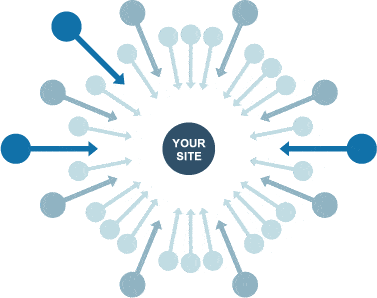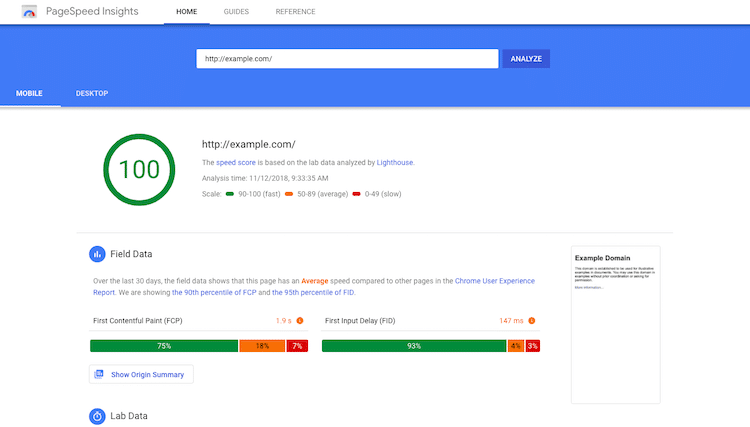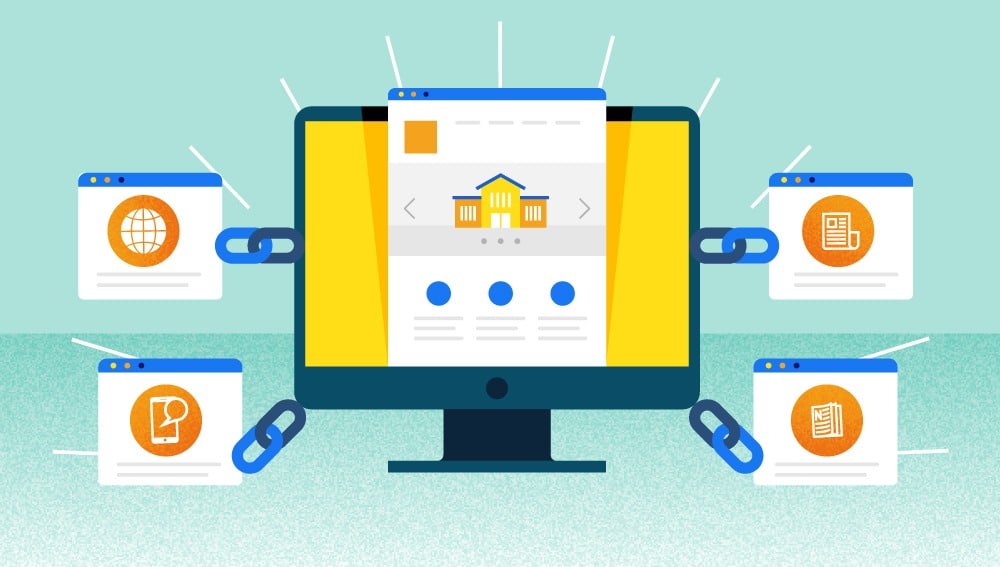10 SEO Tactics to Get Your Website on Top of Google
Whether you’re a higher education institution, a law firm, or a company in any other industry, your search result rankings play a huge part in your website traffic and ability to bring in revenue. And with so many websites and potential competitors out there, it’s no wonder that ranking your website on the first page of Google can be difficult. Luckily, there are a number of overlapping SEO strategies you can employ to rank higher on Google and get more eyes on your page, regardless of what industry your business is in. These strategies include on-page SEO, off-page SEO, technical SEO, and SEO-optimized content. To help you implement them, we’ve outlined the specifics of each tactic below.
Try These On-Page SEO Tactics
Like the higher education space, on-page SEO tactics are constantly changing to reflect the latest marketing landscape. Currently, on-page SEO involves the optimization of individual web pages to improve user experience and target specific keywords. Other tactics also include modifying title tags, writing compelling meta descriptions, and optimizing images.
Tactic #1: Have User-Friendly Content
Businesses often look for answers within complicated guides that explain how to get your website on top of Google using on-page SEO. In reality, success is as simple as paying attention to your customers and their needs. The easier it is for people to read content on your website and find the information they’re searching for, the more likely they will be to remain on and return to your website. Your website’s user experience is also something search engines like Google evaluate when determining page rankings. If it’s difficult to navigate and you have a high click-through-rate, Google will penalize your company’s rankings on SERPs.
So how can you improve navigation on your website and make it more user-friendly?
We recommend evaluating every component from the perspective of an information seeker. Does each page of your site loads quickly, is your content comprehensive, and does it have a clear CTA?
With 52% of all web searches in 2018 being performed on mobile, we also recommend making sure your website optimized for mobile devices. Search engines have been placing increasing importance on the mobile friendliness of websites, and if you want to get your website on top of Google search, you have to structure it accordingly.
Tactic #2: Optimize Your Keywords
The days of keyword stuffing are long gone. Webmasters would previously increase their rankings on Google by including as many instances of their targeted keywords as possible within each piece of content. Like students who plagiarize papers to get a higher grade, websites caught keyword stuffing are penalized. Unlike the students, however, this penalization doesn’t just affect that particular page’s grade. In SEO, it also, ultimately, impacts your entire website’s ability to rank in the long run. This is because search engines like Google grant higher rankings to websites that prove their usefulness and expertise. Keyword stuffing does the opposite; it makes your website appear spammy and like it’s trying too hard to scam the system.Your business and website would be better served by providing value with your web pages. This, of course, doesn’t mean you can’t target specific keywords on each page. They just have to appear naturally within your content. Long-tail keywords and keyword synonyms can help you do this.
Tactic #3: Make Your Website Crawler Accessible
Another component of on-page SEO is your website’s accessibility to meta robots and website crawlers. Search engine bots use crawling to categorize the content on your site. If you block them from doing so, you make it impossible for you to show up in SERPs. To prevent this from happening, make sure your meta robots tag allows for crawling. You also want to ensure any URLs you hope to rank with are included in your sitemap and are not disallowed in your robots.txt.Off-Page SEO Tactics to Boost Your Rankings
If you want to get your website on top of Google, you should also focus on improving its reputation through external means. Simply put, search engines give more credence and higher rankings to websites that other credible sites are willing to link to. Different types of links have different weights when it comes to ranking potential, but they all contribute to your domain’s authority. Tactics to gain these links for a website include link building, guest blogging, skyscraper writing, and much more.
The ultimate goal of all these techniques is to show Google that your website is the leading expert in all things related to your brand. Here’s what they each entail.
Tactic #4: Build Links to Authoritative Sites

More than 200 ranking factors are evaluated to determine your ranking in search engines, but the number of referring domains to your website plays a major role. As we mentioned above, websites that link to yours pass along credibility. This credibility, or “link juice”, as it is often called, is determined based on the referring domain’s ability to fit a number of criteria. These criteria require link sources to be authoritative, trustworthy, relevant, and high quality. The more a website fits these requirements, the more link juice they’ll pass to your website.
If you can get a large number of authoritative domains to link to your website, you’ll be that much closer to seeing your business’ name on the coveted first page of Google.
To get started with link building, we recommend using link building tools to look at your competitors’ backlink profiles and reaching out to the webmasters of those websites. If a domain is willing to link to one of your competitors, the webmasters will likely be willing to link to yours as well. Currently, websites that end with .GOV, .EDU, and .ORG pass on the most link juice out of any other websites. They are the ultimate prize in off-page SEO.
Tactic #5: Publish Guest Blogs with Backlinks
Similar to link building is guest blogging. To be successful with this technique, you need to ensure the content you submit is high quality. Think of guest blogging, and all off-page SEO tactics, as a value exchange. Webmasters allow you to place a link to your website on one of their pages, and in exchange, they receive a piece a well-written, well-researched, authoritative content. If the situation isn’t a win-win for both websites, it’s unlikely that the post will be accepted.Tactic #6: Outrank Competitors with Skyscrapers
The final off-page SEO tactic we’d recommend using if you want to get your website on top of Google is called skyscraper writing. This method derives its name from the idea that people naturally wonder how tall the highest building is when they see a skyscraper, rather than how tall the second or even eighth tallest buildings are. To put it simply, people want the best of everything. Your job, if you want to get your website to rank higher on Google, is to give them the best.Translated to writing, the skyscraper method entails taking the best content ranking for a particular topic or keyword and making something even better. Once you’ve expanded upon and improved the pre-existing content, market it to your potential customers. To be the best on Google, you have to create content that beats the best and get websites to link to it. It’s as easy as that.
Technical SEO is an Important Ranking Factor
 On the back end of a website’s ranking potential is technical SEO. This technique overlaps with on-page SEO tactics and user experience, as it helps keep your website running efficiently. It is just as critical to your success in search engines and gives both crawlers and users the ability to access their desired information without difficulty.
On the back end of a website’s ranking potential is technical SEO. This technique overlaps with on-page SEO tactics and user experience, as it helps keep your website running efficiently. It is just as critical to your success in search engines and gives both crawlers and users the ability to access their desired information without difficulty.
Tactic #7: Have Good Site Speed
Important factors to consider in technical SEO include your site speed, image optimization, and page errors.Have you ever searched a question on Google, only to have the result you click on take forever to load? You likely don’t enjoy experiencing this, and neither do your potential customers or students. This is why site speed, on both mobile and desktop, is a huge factor in your ability to rank in search results. Slow load times make people click off your website, and a high click-through-rate negatively impacts your credibility. Don’t make the mistake of having a poor site speed.
Tactic #8: Optimize Your Images to Improve Load Time
Not all internet users have the same abilities, and not all images will load every time someone visits your website. Make sure your web pages meet all the requirements of Web Content Accessibility Guidelines and that all images are compressed. Doing this will improve your site speed and your chances of outranking competitors in search rankings.Tactic #9: Prevent Page Errors Such as 404's
Although we all wish it were so, you can’t completely prevent 404s and other errors from happening on your site. However, you CAN regularly check your domain for page errors and have a plan of action for effectively resolving them. If you don’t, you run the risk of hindering your website’s ability to achieve high rankings.Produce Content With SEO in Mind
Tactic #10: Create SEO Friendly Content
Remember how we told you these SEO techniques share some overlap? This is another instance. When creating any type of content for your website, it’s important to keep the tips we discussed above in mind. The effects of SEO friendly content on your website are twofold.First, SEO content gives you the ability to drive more revenue for your business by resolving customers’ needs and anticipating their issues before they come up. The more relevant your web content is, the more your audience will access, share, and value it. This, in turn, positively impacts your company’s long term bottom line, drives more revenue to your business, and helps get your website on top of Google search.
The second effect relates to the off-page SEO tactics we mentioned earlier. When you create relevant content that outperforms similar pieces from competitors, high authority domains are more likely to link to your website than others.
Building Your Ranking to Get on Top of Google Takes Patience
Although the optimization tactics we’ve discussed seem straightforward, it’s important to keep in mind that SEO is a long game. It takes time, effort, and patience to see results, but the ROI of a well run SEO strategy is worth the wait. There’s no better time than the present to invest in SEO, so why not start now? Soon enough, you’ll look back and wonder at how far just a few simple strategies have skyrocketed your business.
What SEO tactics have you seen the most success from so far? We’d love to hear your stories! And if you need help implementing these techniques for your higher education institution, set up a call with us today and check out our SEO tactics.




